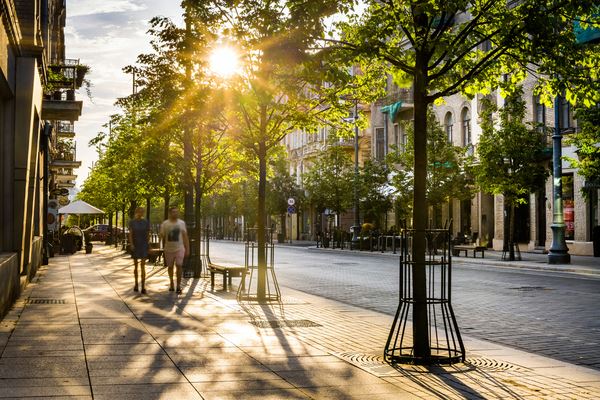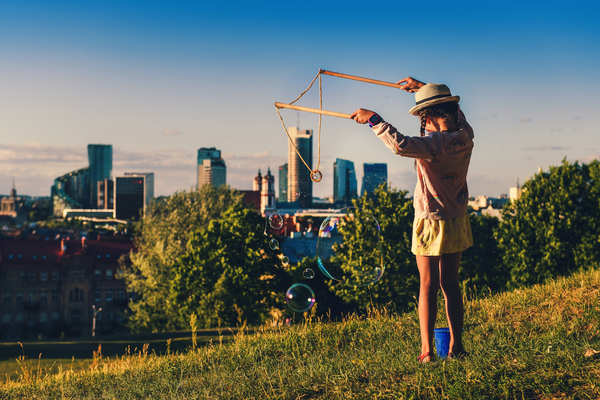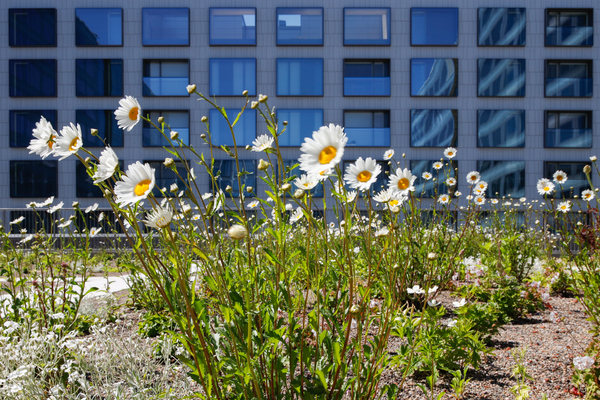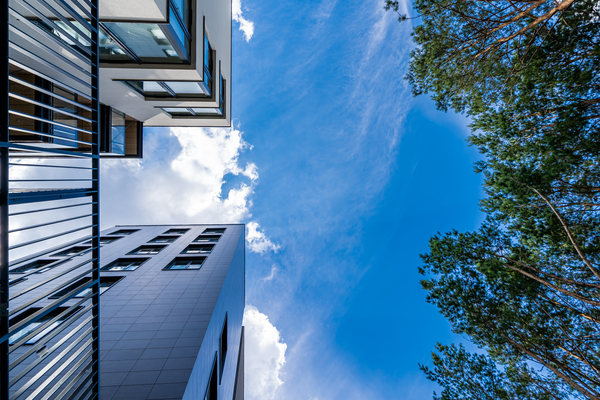Sustainable data centers as a service
- City
- Construction
- Sustainability
- 6/3/2022
Urban diversity and sustainability through green spaces
Cities play an important role in maintaining biodiversity and different species. How can cities be developed sustainably while taking into account biodiversity?

People need nature, no matter where they live. Nature invigorates us physically and mentally and offers opportunities for recreation and relaxation. According to a survey by the Finnish Forest Research Institute (currently the Natural Resources Institute Finland), more than 80 per cent of the respondents felt that green spaces improve the comfort of their residential area, and over 90 per cent said their favourite place is located in nature, in a forest, on a shore or another type of a green space. YIT’s Sustainable urban environments 2020 barometer revealed similar results: city dwellers prefer to live in a district or neighbourhood that is close to nature and services and offers excellent traffic connections.
“The more natural the environment, the more important it feels to the residents, and this is also true for city dwellers,” Jari Niemelä, Professor for urban ecology at the University of Helsinki sums up.
Preserving biodiversity in an urban environment requires concrete measures and the construction of green structures. YIT’s green structures unit constructs green spaces within both private and public projects, such as yards, roads and parks, and provides care and maintenance services.
The planning and construction of green spaces focuses on the quality, sustainability and diversity of housing. One of the largest green structures built in recent years is in Pasila, Helsinki, where the green roofs of Tripla make the city greener and more pleasant by increasing biodiversity.

Shared objectives for sustainable towns and cities
Sustainable urbanisation is based on the Sustainable Development Goals (Agenda 2030) that are agreed on by the UN members and signed also by Finland. A comprehensive approach to sustainability comprises ecological, social, and economic sustainability, and growing cities must meet all of these criteria. YIT is committed to supporting the UN Sustainable Development Goals regarding both sustainable cities and communities, and climate action.
“From the point of view of ecological sustainability, mitigating the climate crisis is one of the most important questions. In other words, how to reduce carbon dioxide emissions, increase carbon-neutral solutions, and take into account the adaptation to climate change,” says Linda Wiksten, Urban Design Manager at YIT.
The aim of YIT’s sustainable development principles is to promote the circular economy by utilising sustainable, comfortable and safe cities where natural diversity is protected.

Cities play an important role in maintaining biodiversity
In addition to being crucial for combatting climate change, cities also play an important role in maintaining biodiversity. According to Niemelä, climate change and the degradation of biodiversity create a vicious cycle where one accelerates the other.
Niemelä says that compared to rural environments, cities can actually have a rich variety of species. In the case of plant species, for example, this is explained by the large number of invasive plants. A good example of the richness of urban nature is the growing Siberian flying squirrel population in the capital region. If Siberian flying squirrels are found in an area, it must be protected, which can prevent the implementation of planned construction projects.
“When this happens, both the flying squirrels and people get beautiful forests, but there might be a shortage of apartments,” Niemelä says.
According to Wiksten, promoting the upward growth of cities is a way to prevent the outward sprawl of sparsely populated suburban areas. This is the most important task of urban planning in the mission to protect biodiversity.
“The key thing is to plan the green network in parallel with the built environment. This allows us to focus densely populated areas in places that have good transport connections and maintain a reasonable green network that offers recreational and environmental values,” Wiksten says.
From research to practice
Designers and decision makers must have sufficient information on the species and natural sites in the area in order to put the protection of biodiversity into practice. Niemelä points out that research-based knowledge must be applied from theory to practice, because it can benefit the planning, construction and management of cities.
“We raise awareness on how nature can be preserved in growing cities. The actual measures – i.e. how cities are constructed – depend on political decisions,” Niemelä adds.
When cities grow and become denser, we need practical tools for ensuring a variety of green spaces in street areas, parks and on plots. According to Wiksten, the green factor tool (in Finnish) is one of the methods commonly used by cities.
“The tool covers, for example, the planting and preserving of vegetation, rainwater management, and the building of green roofs and walls on the surfaces of structures,” Wiksten says.
The green factor target level is specified in the local detailed plan, and the designers of the construction project ensure that the target is met with the help of calculations.

Sustainable environmental construction guides planning and construction
YIT has an operating model for sustainable environmental construction (in Finnish), which guides the planning and construction of green spaces. The aim of sustainable environmental construction is to plan, construct and maintain the environment so that the harmful effects of construction are mitigated, prevented or even compensated for.
YIT takes into account the criteria for sustainable environmental construction, listens to its customers, and complies with the customer’s quality requirements. The purpose of use is taken into account at the planning stage, and the environment is planned so that it supports well-being and comfort. Naturally, as a constructor YIT also thinks of materials, such as plants, rocks, and the diversity of the plant species, and prefers Finnish materials and suppliers.
What does the future of urban nature look like?
In Niemelä’s view, the inclusion of diversity in construction plans is becoming more common, thanks to the increased interest towards environmental matters in recent years.
“Cities and their residents want to maintain biodiversity even during construction. This is a way of making society more sustainable,” Niemelä concludes.
In Wiksten’s view, it is possible to create green environments for people and other species at different scales. There are different ways of enjoying green environments: there can be a larger green area within a short distance of the city and green pockets, roofs, trees and gardens in the densely constructed urban network.
“All of these are valuable and promote well-being,” Wiksten adds.
***
Case: As Oy Helsingin Luoto
In Kalasatama, Helsinki, the yard of the Luoto block features a section that rests on the bedrock – not on the roof of the underground car park – so that the trees can grow freely without the restrictions involved in a deck yard. The island-like green space contains play and exercise areas, as well as spaces for recreation.
Read more (in Finnish)
Case: Tripla green roofs
The Mall of Tripla in Pasila has a hectare of green roofs, featuring various plants that range from meadow flowers to medium sized trees. The vegetation was designed to be very diverse and dynamic: natural selection is not interfered with, and the plants that are successful on the roofs are allowed to spread.
Case: Green and natural Kuninkaantammi
In the Kuninkaantammi district near the Central Park, nature and outdoor recreation routes are always nearby. Ecologically sustainable solutions and green spaces were an important part of the planning of the residential area. The Palettilampi pond that is located in the area will be restored to make it suitable for swimming. The Central Park has amazing forests, along with jogging, skiing and cycling routes to all directions, including the Market Square in Helsinki.
Sustainable urban development with the help of the circular economy



